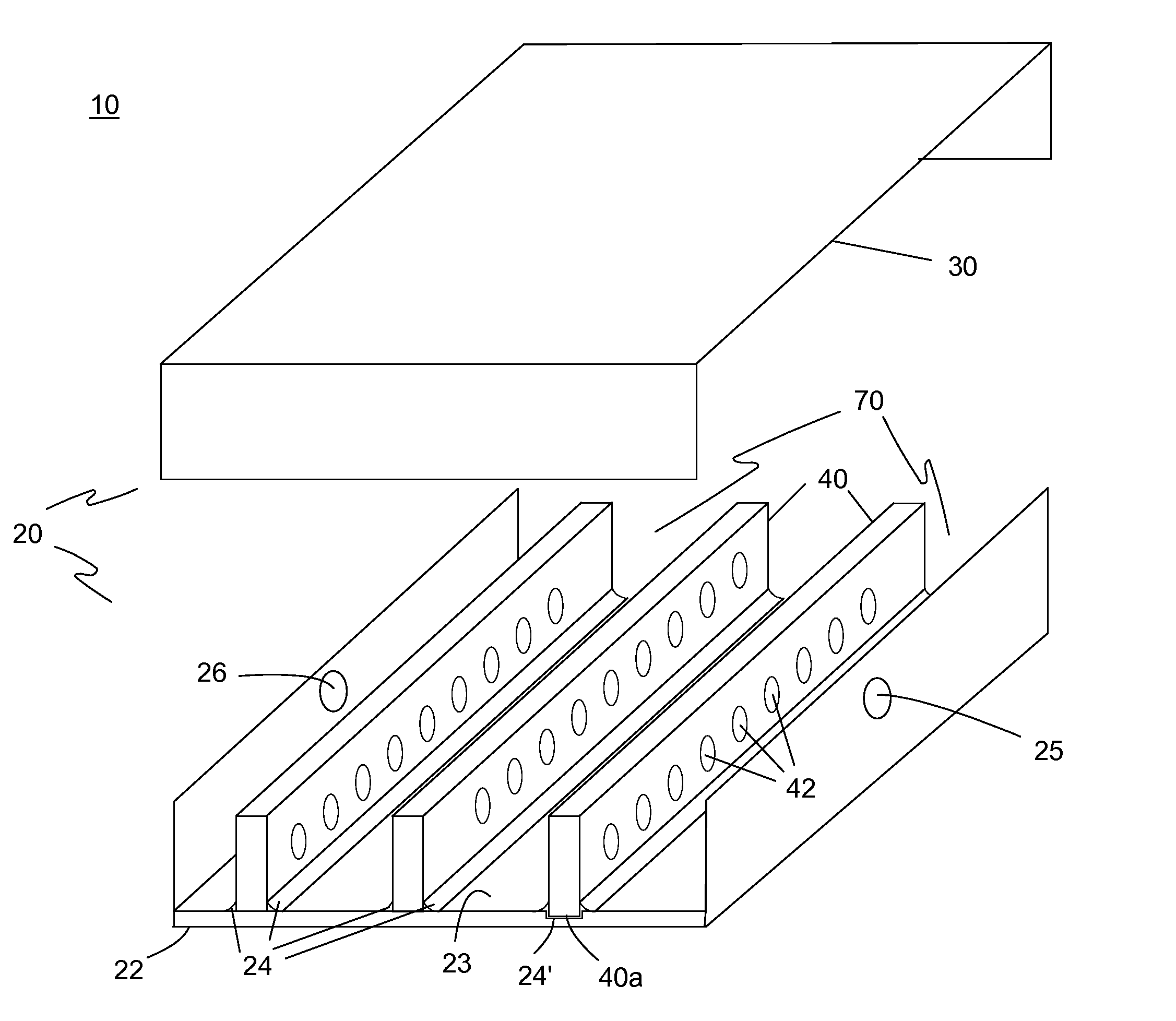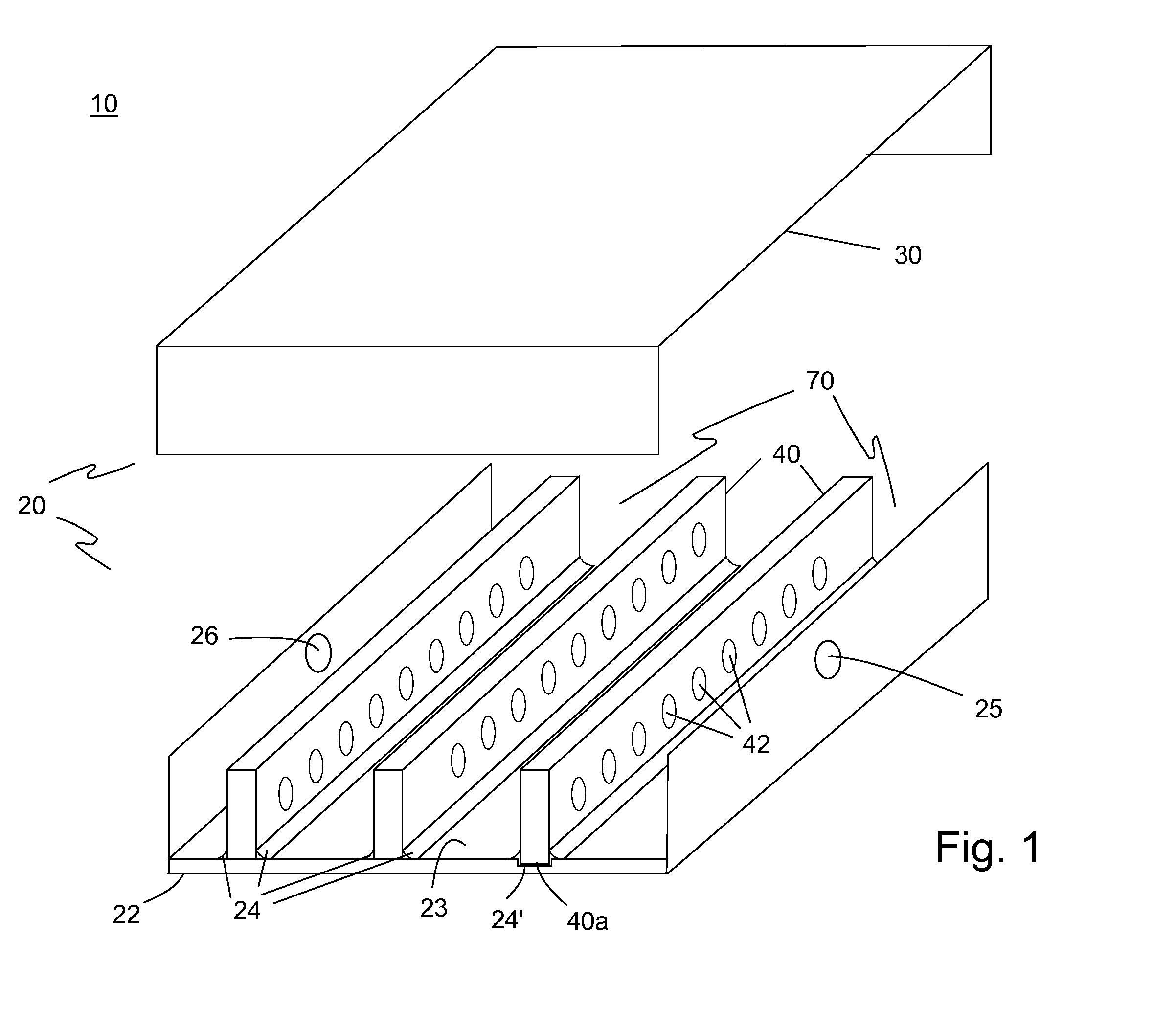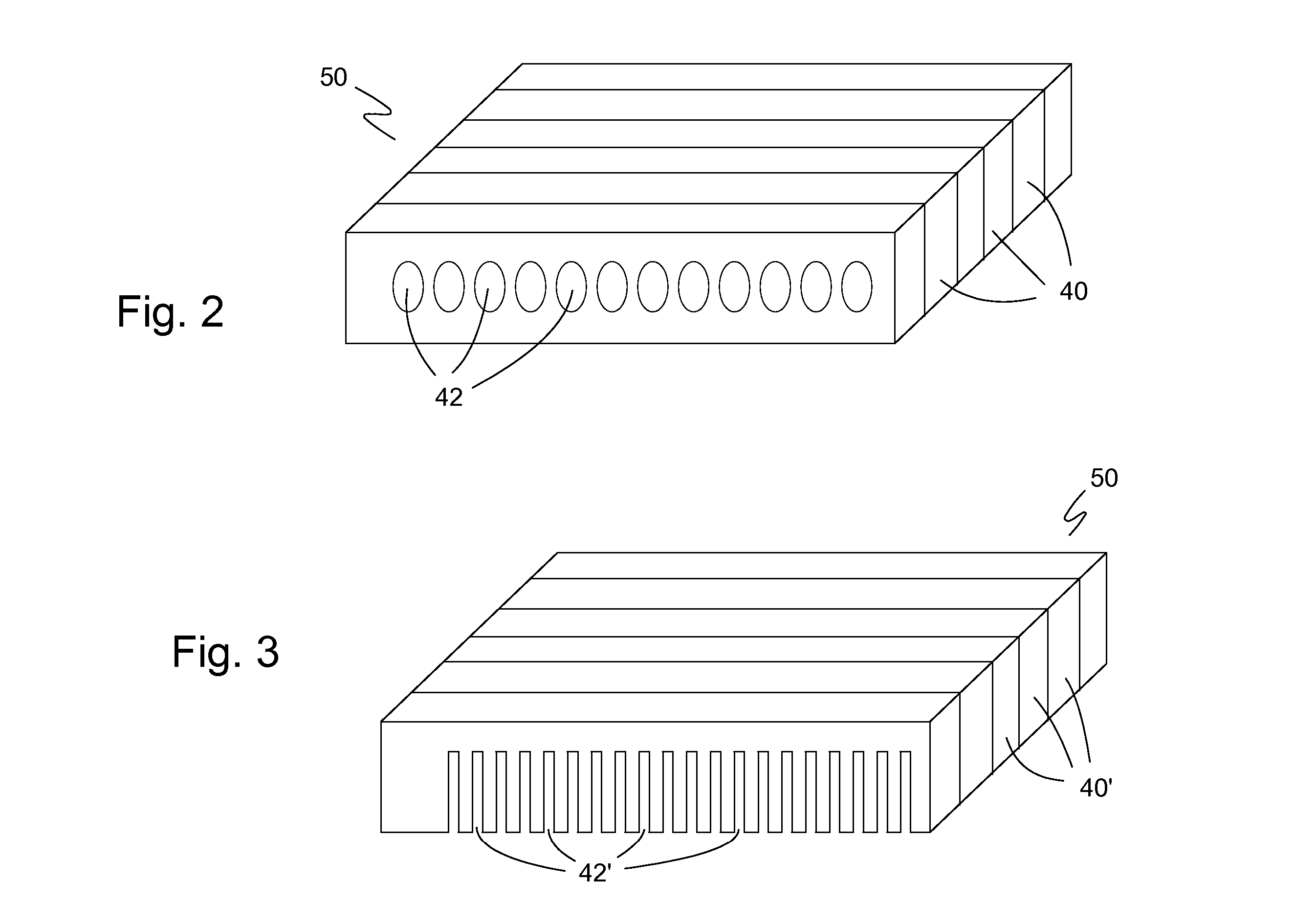High Efficiency Fluid Heat Exchanger and Method of Manufacture
a heat exchanger and high-efficiency technology, applied in the field of heat exchangers, can solve the problems of difficult and expensive manufacturing of such configurations, high manufacturing cost, and high cost of prior-art heat exchangers, and achieve good thermally conductive bond, small heat exchanger, and large surface area
- Summary
- Abstract
- Description
- Claims
- Application Information
AI Technical Summary
Benefits of technology
Problems solved by technology
Method used
Image
Examples
Embodiment Construction
[0021] The preferred embodiment(s) of the present invention is illustrated in FIGS. 1-4. FIG. 1 shows one embodiment of a heat exchanger 10 of the present invention in a separated view. Heat exchanger 10 includes a housing 20 with a fluid inlet 25 and a fluid outlet 26 and a plurality of fin members 40 enclosed within housing 20. Housing 20 has a thermally conductive portion 22 to which the plurality of fin members 40 are thermally connected.
[0022] In the preferred embodiment, housing 20 has a base 22 and a cover 30. Base 22 is made of a thermally conductive material and is the thermally conductive portion. Base 22 optionally and preferably includes a plurality of ribs 24 or grooves 24′ along an inside surface 23. It should be understood that both the base and cover may be made of thermally conductive material.
[0023] The plurality of fin members 40, which are made of a thermally conductive material, are thermally connected along a base edge 40a to the inside surface 23 of base 22 ...
PUM
| Property | Measurement | Unit |
|---|---|---|
| thermally conductive | aaaaa | aaaaa |
| distance | aaaaa | aaaaa |
| period of time | aaaaa | aaaaa |
Abstract
Description
Claims
Application Information
 Login to View More
Login to View More - R&D
- Intellectual Property
- Life Sciences
- Materials
- Tech Scout
- Unparalleled Data Quality
- Higher Quality Content
- 60% Fewer Hallucinations
Browse by: Latest US Patents, China's latest patents, Technical Efficacy Thesaurus, Application Domain, Technology Topic, Popular Technical Reports.
© 2025 PatSnap. All rights reserved.Legal|Privacy policy|Modern Slavery Act Transparency Statement|Sitemap|About US| Contact US: help@patsnap.com



